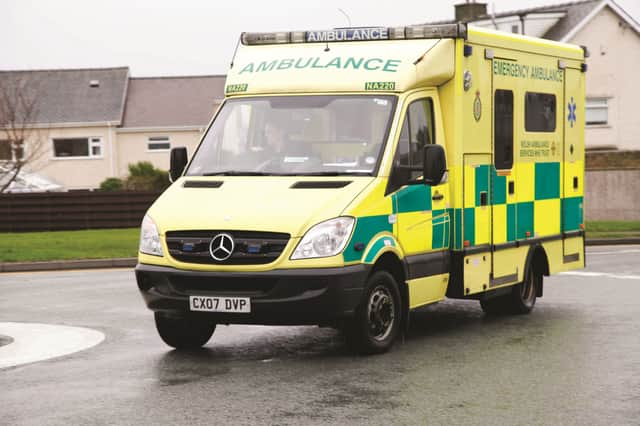A third of 999 callers not taken to hospital


Around 32 per cent of patients were treated at the scene by paramedics, or advised on the phone by health experts.
Yorkshire Ambulance Service changed how it handles emergency calls after a nationwide study, in which the outcomes of 14 million calls were monitored.
Advertisement
Hide AdAdvertisement
Hide AdNow it has launched the Right Response First Time campaign, highlighting its different responses to new call categories.
The new system sheds light on why Rotherham patients have been told by dispatchers to expect a wait of one hour or more.
The service has emphasised that it always dispatches an ambulance to patients needing time-critical help in a serious or life-threatening emergency.
But it will modify its response where urgent hospital care is not appropriate.
Advertisement
Hide AdAdvertisement
Hide AdStephen Segasby, deputy director of operations, said: “Ambulance services have evolved considerably in recent years and are no longer about taking all patients to a hospital emergency department.
“We are focused on providing high quality treatment for our patients wherever they may be. This could be over the phone or in person.
“We have a range of clinicians with a variety of skills who help us to ensure that our patients receive the right care with the right resource in the right place at the right time.”
He added: “When a patient is seriously ill or in a life-threatening condition they will be taken to the nearest emergency department or trauma unit.
Advertisement
Hide AdAdvertisement
Hide Ad“But for patients with less urgent needs, the focus is shifting away from acute hospitals.”
The campaign explains new national standards which have changed the way emergency calls are categorised.
Introduced by NHS England last November, these see call handlers asking additional questions to quickly identify patients of the highest priority.
This allows ambulances to be dispatched without delay, with A&E resources preserved for those who need them.
Advertisement
Hide AdAdvertisement
Hide AdCategory 1 calls require a seven-minute response. These relate to life-threatening injuries and illnesses like cardiac arrest or a serious allergic reaction.
Most of these patients will be taken directly to hospital.
Category 2 calls demand an 18-minute response. These relate to emergencies like a stroke, difficulty breathing or chest pains.
Most such patients are taken to hospital, usually the nearest emergency department.
But sometimes these people are taken straight to a specialist unit, for the most appropriate care.
Advertisement
Hide AdAdvertisement
Hide AdCategory 3 calls are attended within two hours, 90 per cent of the time. These are urgent calls such as labour, non-severe burns or diabetes.
In some such instances, patients may be treated in their own home.
Category 4 calls are attended within three hours, 90 per cent of the time. These are less urgent calls like diarrhoea and vomiting or urine infections.
Some patients may be given advice over the phone, or referred to another service like a GP or pharmacist.
Advertisement
Hide AdAdvertisement
Hide AdThe Advertiser reported in January that a man collapsing outside Riverside House was told he may have to wait three hours before paramedics arrived.
And an elderly woman who fell and broke her ankle in Brampton was told that an ambulance may take one hour to attend.
Stephen said: “Our emergency medical dispatchers who receive the 999 calls have been given more time to come to the right conclusion about what is the most appropriate response for the patient.
“Early recognition of life-threatening conditions, particularly cardiac arrest, has increased because a new set of pre-assessment questions identifies those patients in need of the fastest response.
Advertisement
Hide AdAdvertisement
Hide Ad“For stroke patients, this means we send an ambulance to convey them to a specialist stroke unit.
“Previously a rapid response vehicle would ‘stop the clock’, but couldn't transport them to an ED.
“Now they get to where they need to be for definitive care more quickly.”